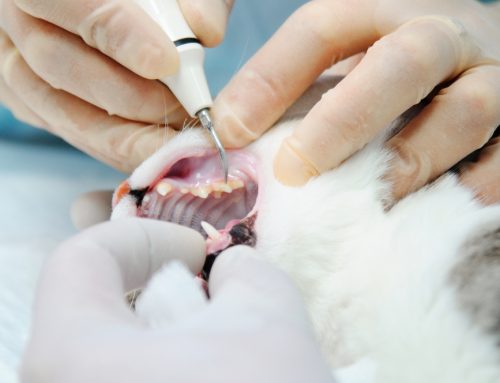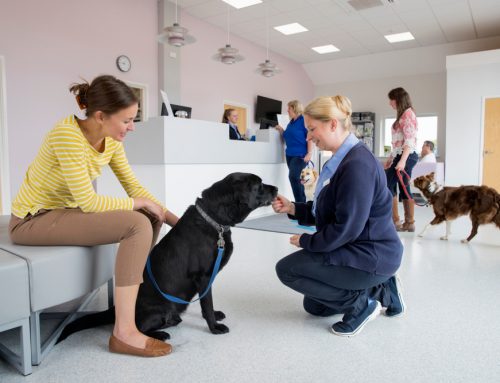About 10 million pets are lost each year in the United States, and many are placed in animal shelters. Tragically, the majority have no identification and cannot be returned to their owner. We strongly promote microchipping, because microchipped pets are much more likely to be returned to their homes should they go missing. However, you may have questions about this common procedure.
Question: What are microchips for pets?
Answer: Microchips used in pets are electronic chips inside a glass capsule about the size of a rice grain. Once inserted, the device is activated when a scanner is passed over the area, and the microchip transmits a unique identification number to the scanner.
Q: How is the microchip implanted in my pet?
A: The procedure to implant a microchip is easy and mostly painless. The microchip is packaged with an injection device and information regarding the unique identification number. Our veterinary professionals will scan the microchip to ensure the transmitted number matches the number in the packaging. The microchip is injected under your pet’s skin, using the needle provided, which is a little larger than those we use to administer your pet’s vaccines. Once the device is implanted, we will scan the area, to ensure the microchip is transmitting appropriately.
Q: Why should I get my pet microchipped?
A: Microchips are beneficial for numerous reasons, including:
- Reunion — Your pet is much more likely to be returned when they go missing if they are microchipped.
- Pet snatchers — Criminals steal pets, especially purebred pets, to resell them for easy money. If your pet is microchipped, you have proof that they belong to you.
- Lifelong identification — Microchips provide permanent, lifelong identification. The chips are made from biocompatible material that will not break down over time, and most last at least 25 years.
- Animal shelters — Microchipped pets can be returned to their owners, decreasing the strain on overcrowded animal shelters.
Q: What information is stored in my pet’s microchip?
A: The identification number is linked to the microchip registry’s database, where you can store your contact information. Some microchip registration companies also allow you to store your pet’s medical information in the database.
Q: If my pet goes missing, can the microchip track them?
A: No. The microchip is not a global positioning system device, and cannot be used to track your pet.
Q: Do microchips really help reunite pets and their owners?
A: Yes! Microchipped pets are much more likely to be reunited with their owners. A 2009 study reported that non-microchipped dogs were returned to their owner 21.9 percent of the time, while 52.2 percent of microchipped dogs were returned. Non-microchipped cats were returned 1.8 percent of the time, while microchipped cats were returned 38.5 percent of the time.
Q: If my pet is microchipped, can I remove their collar and identification tags?
A: No. A microchip does not replace identification tags. If your pet gets lost, and they are wearing identification tags, this is the quickest way they will be returned to you. Microchips provide permanent identification if your pet’s tags are lost or removed.
Q: Can my pet’s microchip be read by any scanner?
A: Different microchip companies use different frequencies to transmit the identification number. However, universal scanners that can read all the frequencies are now widely used. The International Standards Organization (ISO) has approved a global microchip standard, to ensure the identification system is consistent worldwide. This ISO standard frequency is 134.2kHz. Many countries, including all European Union member countries, require your pet to have an ISO microchip to enter their country.
Q: Does my pet’s microchip endanger my privacy?
A: No. Your contact information will be used only to find you should your pet go missing, and their microchip is scanned. Microchip companies have safeguards in place to ensure your information is protected.
Q: Could my pet experience complications if they are microchipped?
A: The most common complication reported in microchipped pets is the chip migrating under the skin to a different location.
Q: Do I need to activate my pet’s chip?

A: Your pet’s chip will be activated when a scanner passes over the site, but you do need to register your pet’s microchip. Our team at Bolton Veterinary Hospital will provide the information you need to go to the registry’s website, and enter your contact information. You must ensure you keep this information up to date.
As a responsible pet owner, microchipping your pet should be a priority. If you would like to have your pet microchipped, contact Bolton Veterinary Hospital, to schedule an appointment.







Leave A Comment